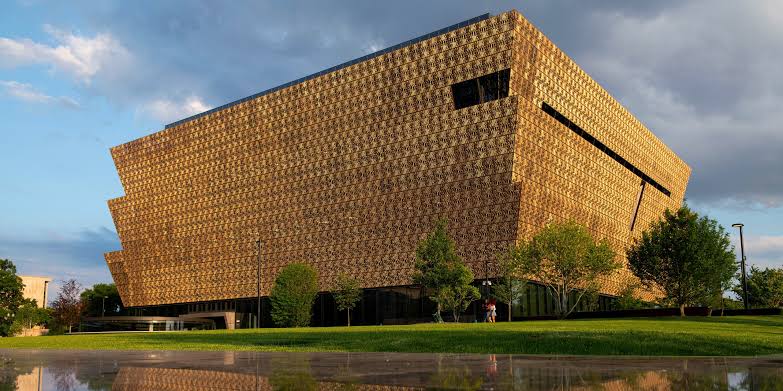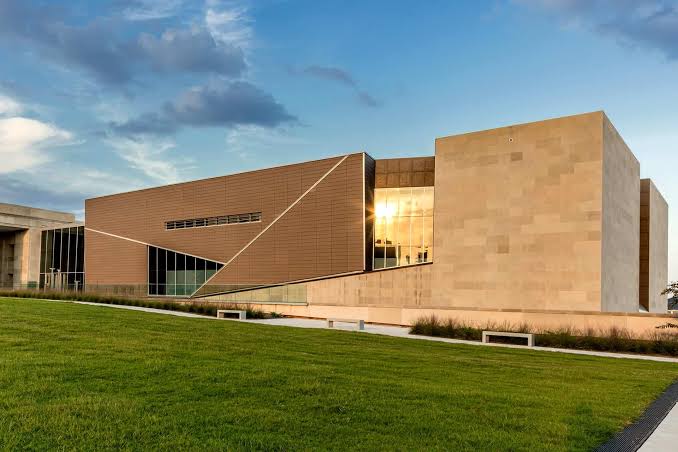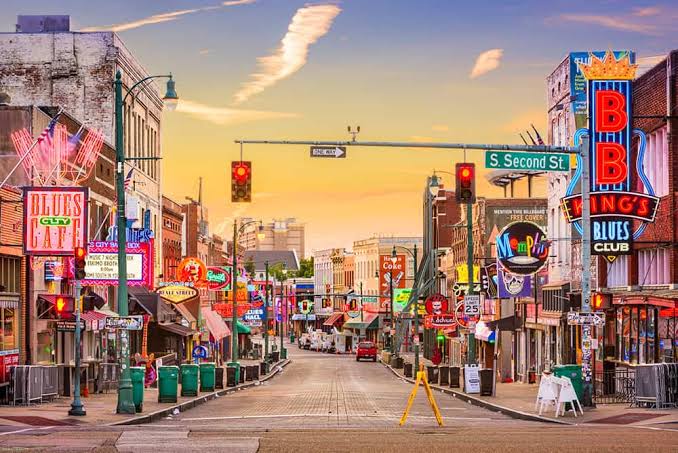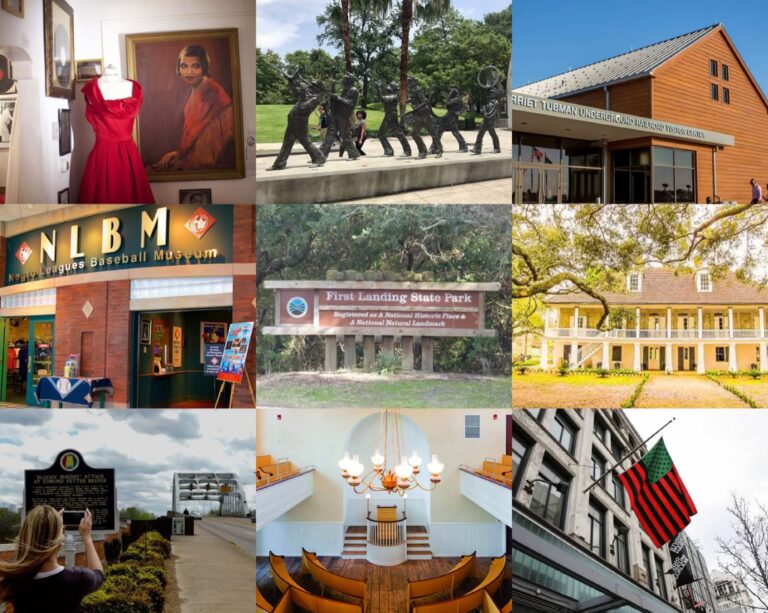Several Parks, monuments, and historic residences throughout the United States offer tribute to the long-lasting cultural and historical achievements of Black residents over the centuries. For this black history month, we are discovering 15 Inspiring Places to learn about Black History in the U.S.
The legacy of Black Americans is sometimes disregarded by the country at large, and it wasn’t until November 2016 that the Smithsonian established a national museum dedicated to African American history and culture. Nonetheless, traces of some of the country’s most significant singers, legislators, writers, and Civil Rights leaders can be discovered in almost every state.

Although certain black history landmarks in their own cities and towns may have gone unnoticed by travelers; such as the lunch counters where young people campaigned against segregation laws or the African Meeting House in Boston, which is the country’s oldest Black church. Consider visiting one of the following 15 sites, which are just a small sampling of the hundreds of places where visitors can learn about Black history in the U.S.
1. First Landing State Park, Virginia Beach, Virginia

First Landing State Park, located on Cape Henry in Virginia Beach, is the most visited state park in Virginia. It was erected in the 1930s by an all-African American unit, Company 1371, and is now a designated National Natural Landmark. Company 1371 of the Civilian Conservation Corps (CCC) formed by former President Franklin D. Roosevelt built more than 20 miles of paths, drained the marsh, and planted a broad variety of trees and shrubs to create Seashore State Park, which was later renamed First Landing State Park. Visitors can now hike, camp, bird watch, and do other things at this historic state park.
2. Whitney Plantation, Wallace, Louisiana

The Whitney Plantation, built on the grounds of a mid-1700s sugar, rice, and indigo plantation, is now a museum dedicated to educating the public about the history of slavery. Visitors can visit the grounds, which contain old slave cottages, a freedmen’s church, a detached kitchen, and an owner’s mansion built in 1790. The museum also contains a variety of recollections for the people who were enslaved on the estate.
3. Negro Leagues Baseball Museum, Kansas City, Missouri

This Missouri museum, founded in 1990, was founded with the cooperation of local historians and former baseball players. The museum now has 10,000 square feet of space in the same building as the American Jazz Museum. Visitors can look at images and interactive displays about some of the most famous Black baseball players, such as Jackie Robinson and Buck O’Neil.
4. Civil Rights Trail

This national trail, which spans 15 states, educates tourists about the long and ongoing struggle of Black people for equal rights. The Martin Luther King, Jr. Memorial on the National Mall in Washington, D.C., and the Edmund Pettus Bridge, site of a police confrontation during the Selma, Alabama marches, are among the locations.
5. Studio Museum, Harlem, New York

The Studio Museum in Harlem, New York, is dedicated to exhibiting the works of African-American artists. The permanent collections and traveling exhibitions of the museum focus on African and African American history, culture, and identity. The space also conducts online and in-person community events, as well as an artists-in-residence program. The museum is currently closed, however you can view the collection online.
6. National Museum of African American History and Culture, Washington, D.C.

According to its website, this Smithsonian museum in Washington, D.C. is the “only national museum devoted exclusively to the documentation of African American life, history, and culture,” and it opened in November 2016. Among the items on show are Chuck Berry’s Cadillac, Harriet Tubman’s prayer shawl, and protest placards from the Black Lives Matter movement. The Sweet Home Café in the museum exhibits some of the museum’s tales and themes while also providing visitors with a taste of traditional diaspora dishes. Try the spicy oxtail pepperpot or the sweet potato pie.
7. Mississippi Civil Rights Museum and Museum of Mississippi History, Mississippi

These two museums try to examine the state’s contentious history, particularly during the height of Jim Crow segregation laws in the twentieth century.
The Civil Rights Museum, in particular, looks at how Mississippi was a key organizational ground for the civil rights movement in the 1960s. With Mississippi’s strong segregation, protests such as the Freedom Rides and other forms of resistance to segregation frequently began there.
“These museums are telling the stories of Mississippi history in all of their complexity,” said Katie Blount, director of the Mississippi Department of Archives and History, which operates the two new museums, in a statement. “We are shying away from nothing. Understanding where we are today is shaped in every way by where we have come from in our past.”
8. Beale Street Historic District, Memphis, Tennessee

This Memphis area was a breeding ground for some of the best early jazz, blues, and R&B music. Louis Armstrong, B.B. King, and Muddy Waters all performed at the legendary clubs in this region, and Elvis spent a lot of time there as a teenager, listening to the blues music that influenced his rockabilly style.
9. National Voting Rights Museum and Institute, Selma, Alabama

The National Voting Rights Museum and Institute, located near the Edmund Pettus Bridge in Selma, Alabama, documents, protects, and celebrates the activists who participated in the events leading up to and during the 1965 Selma to Montgomery marches and the passage of the 1965 Voting Rights Act. Exhibitions, such as the “Women’s Suffrage” and “Selma” galleries, recall and recognize the courage of these freedom warriors as they fought for the right of all African Americans to vote.
10. National Museum of African American Music, Nashville, Tennessee

The National Museum of African American Music provides a chance to acknowledge and preserve the huge and numerous contributions made by the African American community to the music business, as well as to celebrate the essential role African Americans have had in developing American music. The first and only U.S. museum of its kind, the innovate space “will share the story of the American soundtrack by integrating history and interactive technology to honor Black musical heroes of the past and the present,” according to a press release.
11. Colored Musicians Club, Buffalo, New York

The Colored Musicians Club in Buffalo, New York, is the only African American jazz club still in operation in the United States. The historic club, founded in 1917, became a gathering place for African artists to mingle, play music, and rehearse. It has welcomed musical giants such as Ella Fitzgerald and Duke Ellington. The CMC was declared a historical preservation site in 1999, and the first floor of the building is now a multimedia museum where visitors may listen to jazz and view historic relics.
12. African Meeting House, Boston, Massachusetts

Constructed in the early 1800s, this modest church in Boston’s Beacon Hill area is one of the country’s oldest historically Black churches. The site operated as a church, school, and gathering place for members of Boston’s Black population, particularly during the nineteenth-century campaign to abolish slavery.
13. Harriet Tubman Underground Railroad National Historical Park, Church Creek, Maryland

Harriet Tubman, a former slave who went on to become a leader of the Underground Railroad, is one of history’s most memorable women. In 2017, the property surrounding her home in upstate New York was designated a national park, safeguarding its legacy.
During the Civil War she served as a Union spy who uncovered Confederate troop placements and supply lines as well as a nurse for Union troops. After the war, she raised money to help support freedmen and cared for her elderly parents whom she had rescued from slavery. Tubman purchased 32 acres in the abolitionist stronghold of Auburn and built her home as well as the Harriet Tubman Home for the Aged.
“What makes her so incredibly striking is that she went back several times after her own escape to freedom to help others,” Debra Michals, Ph.D. and director of women and gender studies at Merrimack College, told Travel + Leisure. “I don’t think most people today could comprehend what kind of inner fortitude and dedication to the larger cause of freedom that that must have taken.”
14. MARIAN ANDERSON HISTORICAL RESIDENCE AND MUSEUM, PHILADELPHIA, PA

Marian Anderson, a renowned classically trained contralto and civil rights icon, broke down racial barriers with the beauty of her voice. She began singing in her church choir, and her talent was so apparent that the church raised funds for her to study with a well-known voice teacher. She was denied admittance to Philadelphia’s music school because of her race, so she studied in Europe and returned to the U.S. to perform at Carnegie Hal.
In 1936, she became the first African American to perform at the White House for President Roosevelt and First Lady Eleanor. In a defining moment, her management tried to arrange for her to perform at Constitution Hall in DC, but the owners of the hall, the Daughters of the American Revolution, pretended that there were no dates available.
First Lady Roosevelt resigned from the group in protest and invited Anderson to sing on the steps of the Lincoln Memorial on Easter Sunday in 1939 instead, making her the most famous contralto in the country. She went on to become the first African American artist to sing at New York’s Metropolitan Opera in 1955. The red brick house was Anderson’s primary residence when she wasn’t touring.
15. CONGO SQUARE, NEW ORLEANS, LA

An modest section of New Orleans’ Louis Armstrong Park was once one of the most hallowed sites in African American history. Congo Plaza was one of the few areas where enslaved Africans were allowed to dance and perform music. This gathering location was where traditional African dances and drumming would grow into cultural manifestations such as the second line, jazz, and Mardi Gras traditions.
Congo Square was also used for spiritual rituals and resistance to racism and persecution in the city. Congo Square, located in Tremé, which is sometimes considered as the oldest Black neighborhood in the United States, retains its cultural relevance as a host to traditional Black social aid and pleasure clubs that parade through the region.

